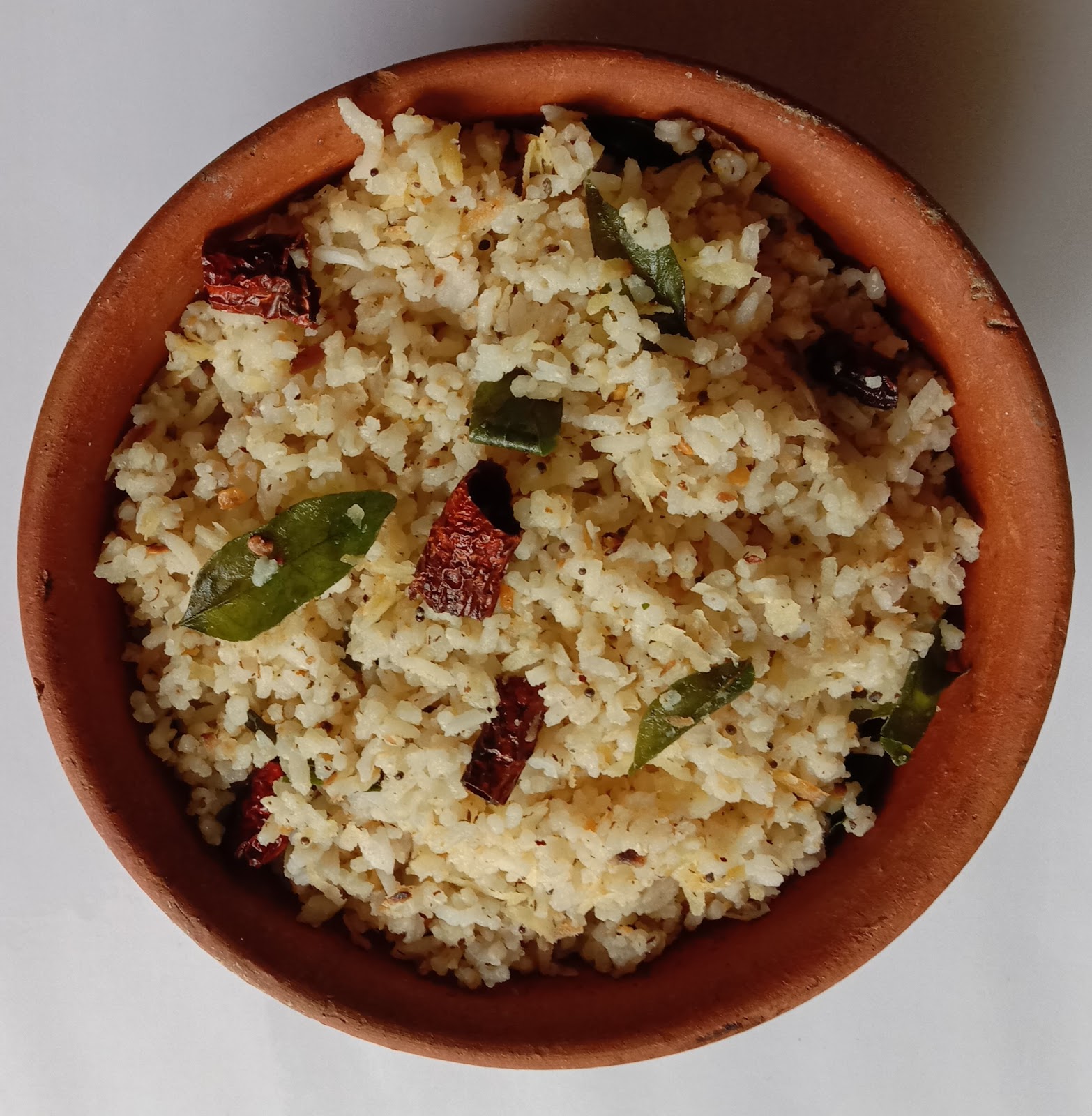Coconut Rice | Thengai Saadam
Rice Recipe
From most ancient times, coconut is the most sought after ritualistic offering in Hindu traditions and rituals.
Learn to prepare this easy flavourful rice dish made using fresh (or dry) grated coconut tempering spices and rice.
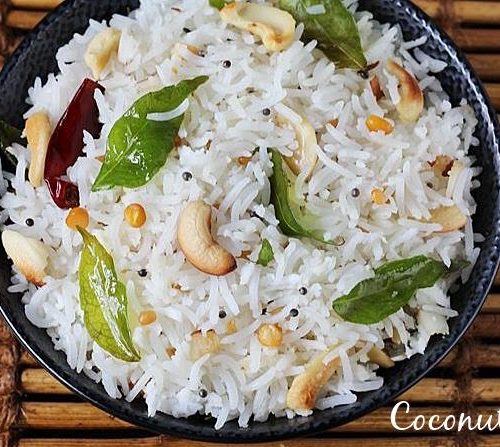
Introduction
About this Recipe
Coconut flavors are the most common ingredient in almost every South Indian food specially made for pujas and festivals. Coconut rice or Thengai Saadam (in Tamil language) is an easy flavourful rice dish made using fresh (or dry) grated coconut tempering spices and rice.
From most ancient times, coconut is the most sought after ritualistic offering in Hindu traditions and rituals. In fact, no part of a coconut tree is wasted and is therefore referred to as kalpa vriksha or “tree of life” in Sanskrit. No event in the Hindu series of samskaras, from birth to death, is coconut ever skipped as an offering.
Coconut features in a very large number of recipes in the Bhaga Shastra too. In its tender form, coconut water or coconut juice is a great summer coolant, an immediate recommendation for recuperating patients and also used in many dishes. Mature coconut flesh is grated and used in many dishes either as is or ground to a paste with other condiments depending on the dish that is prepared. Mature coconut is processed for virgin oil and coconut milk from which many delicacies are made. Dried coconut flesh is called copra, and the oil and milk derived from it are commonly used in cooking – frying in particular.
Coconuts are not just delicious, but also highly nutritious and is recommended as a necessary part of one’s diet to stay healthy. “Raw coconut meat supplies a high amount of total fat (33 grams), especially saturated fat (89% of total fat), moderate content of carbohydrates (15 grams), and protein (3 grams). Micronutrients in significant content (more than 10% of the Daily Value) include the dietary minerals, manganese, copper, iron, phosphorus, selenium, and zinc.”
Traditional areas of coconut cultivation in India are the states of Kerala, Tamil Nadu, Karnataka, Puducherry, Andhra Pradesh, Goa, Maharashtra, Odisha, West Bengal and, Gujarat and the islands of Lakshadweep and Andaman and Nicobar. However, in terms of yield per hectare, it is Tamil Nadu that accounts for major production of coconut in India, although Kerala has a greater density of trees.
The ingredients and procedures explained here are taken from Bhaga Shastra directly, along with nutritional values and additional tips.

“YOGIS HAVE DEVELOPED A UNIQUE EATING STYLE WHICH
IS TASTY AND HEALTHY
– THAT IS WHAT IS THE AGAMIC FOOD.
I WANTED THAT FOOD DESCRIBED IN THE BHAGA SHASTRA
TO BECOME THE LIFESTYLE,
THE FOOD WHICH IS VERY HEALTHY AND TASTY.”
– SPH JGM Nithyananda Paramasivam
Preparation time: 15 minutes
Cooking time: 30 minutes
Total time: 45 minutes
Servings : 8 servings
Course: Main Dish
Cuisine : South Indian, particularly Tamizhian cuisine
Ingredients
For making Rice:
Rice 250 gms
Water 800 ml
Melted ghee 17.5 ml
For Tempering:
Ghee 70 ml
Red Chilly 2.9 gms
Urad Dal 5.8 gms
Mustard Seeds 2.9 gms
Curry leaves 1 gm
For Roasting and Grinding:
Grated dry Coconut 58.3 gms
Powdered crystal salt 5.8 gms

Cooking Method
- Transfer the water into the clay pot and place it on the stove for boiling.
- Add the washed rice into the boiling water.
- Close it with a lid and allow the rice to cook.
- After a few minutes of adding the rice, you see because of closed cooking, the steam pulls the lid outside. Best is to always remove the lid and allow the rice to cook uncovered.
- Check if rice is cooked. Then drain the excess water out.
- Now transfer the cooked rice onto a clean plate.
- Let it cool for a few minutes.
- Once the rice is cooled, add the melted ghee on the rice.
- Next, mix the rice with the ghee gently until it is completely coated with it.
- In an iron kadai pour 70 ml of ghee.
- When the ghee is hot, add the red chillies.
- Stir fry the red chilli in the ghee.
- Then add the mustard seeds, urad dal and curry leaves. Stir it and allow it to fry for about a minute or until the mustard seeds fully splutter.
- Switch off the flame and transfer contents into a bowl. Keep this mixture aside.
- Take the same iron kadai, place on the stove, add the grated dry coconut and stir fry it until it becomes light brown in colour.
- When the coconut turns slightly brown, add salt and mix well.
- Next, add the rice and mix into the fried coconut gently.
- Now add the tempered mixture placed in a separate bowl, over this rice.
- Mix the fried coconut and tempered mixture in the rice gently till it coats evenly.
- The Coconut Rice is now ready to be served as naivedyam to the deity.
Food cooked as per the Bhaga Shastra will enhance our health and well being, ultimately leading us to enlightenment itself.
Note: You can use freshly grated coconut (350 gms) instead of dry coconut for this recipe. Roast it until it becomes light brown and add to the rice.
Step by step instructions
1
Transfer the water into the clay pot and place it on the stove for boiling.
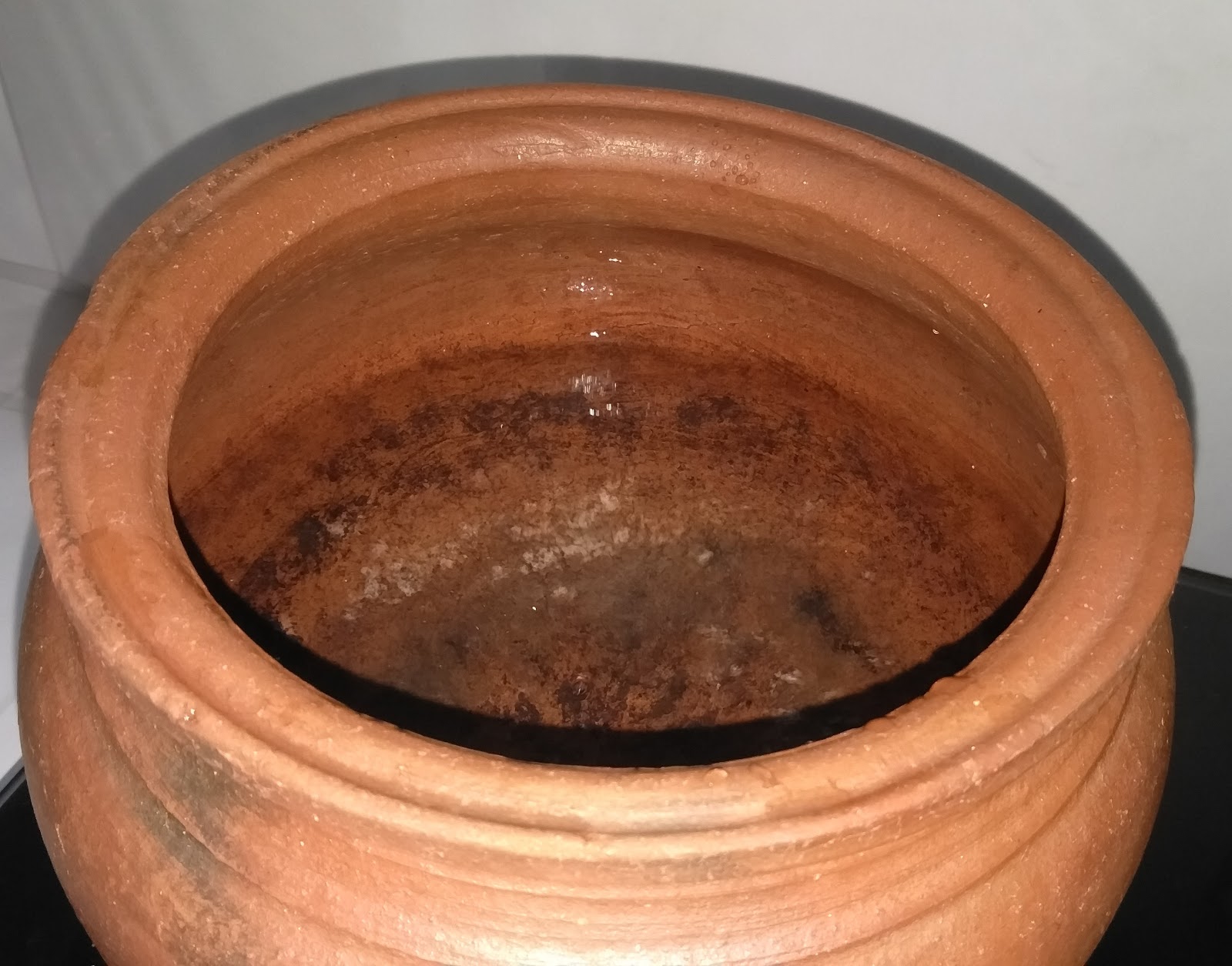
2
Add the washed rice into the boiling water.
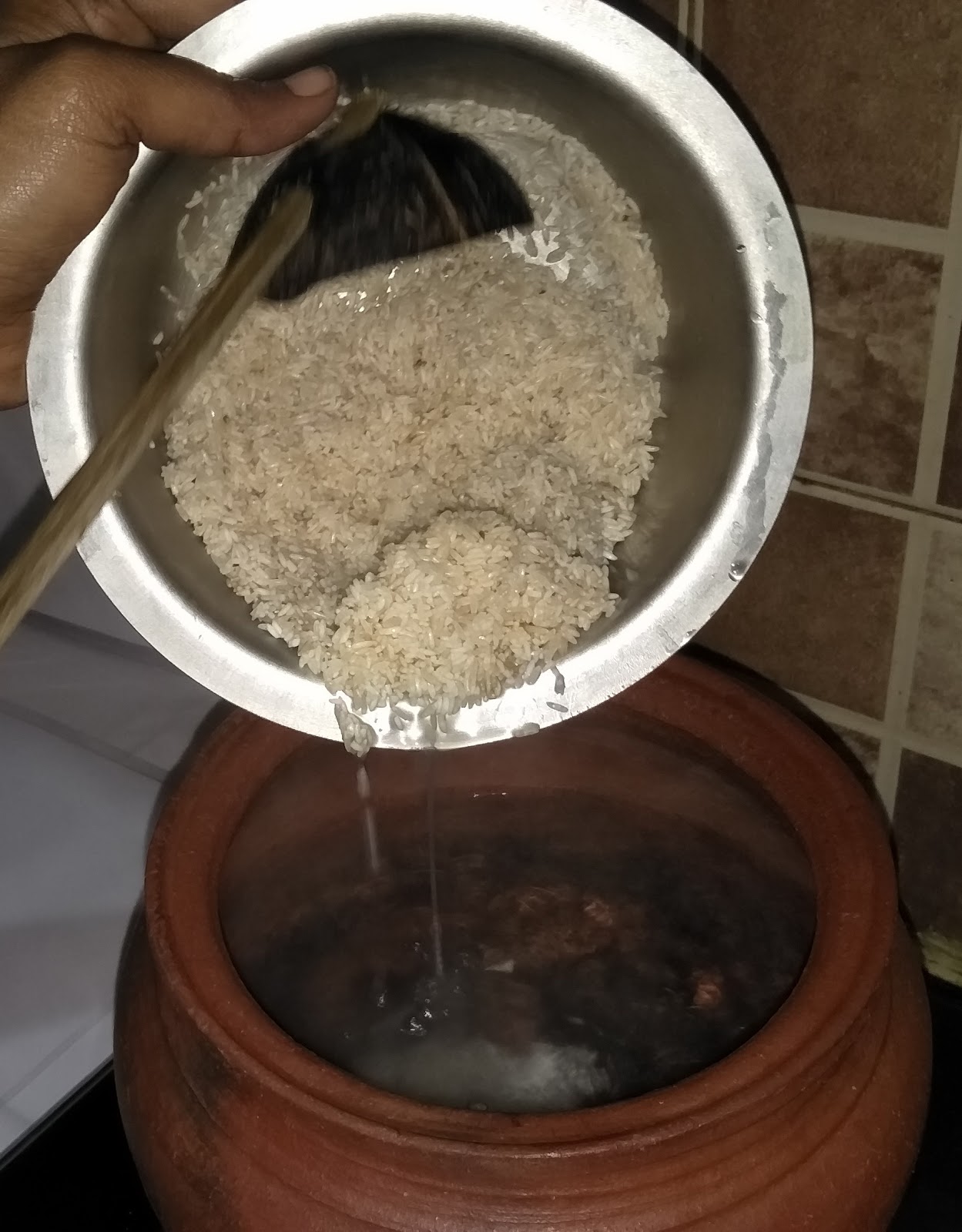
3
Close it with a lid and allow the rice to cook. Best is to always remove the lid and allow the rice to cook uncovered.
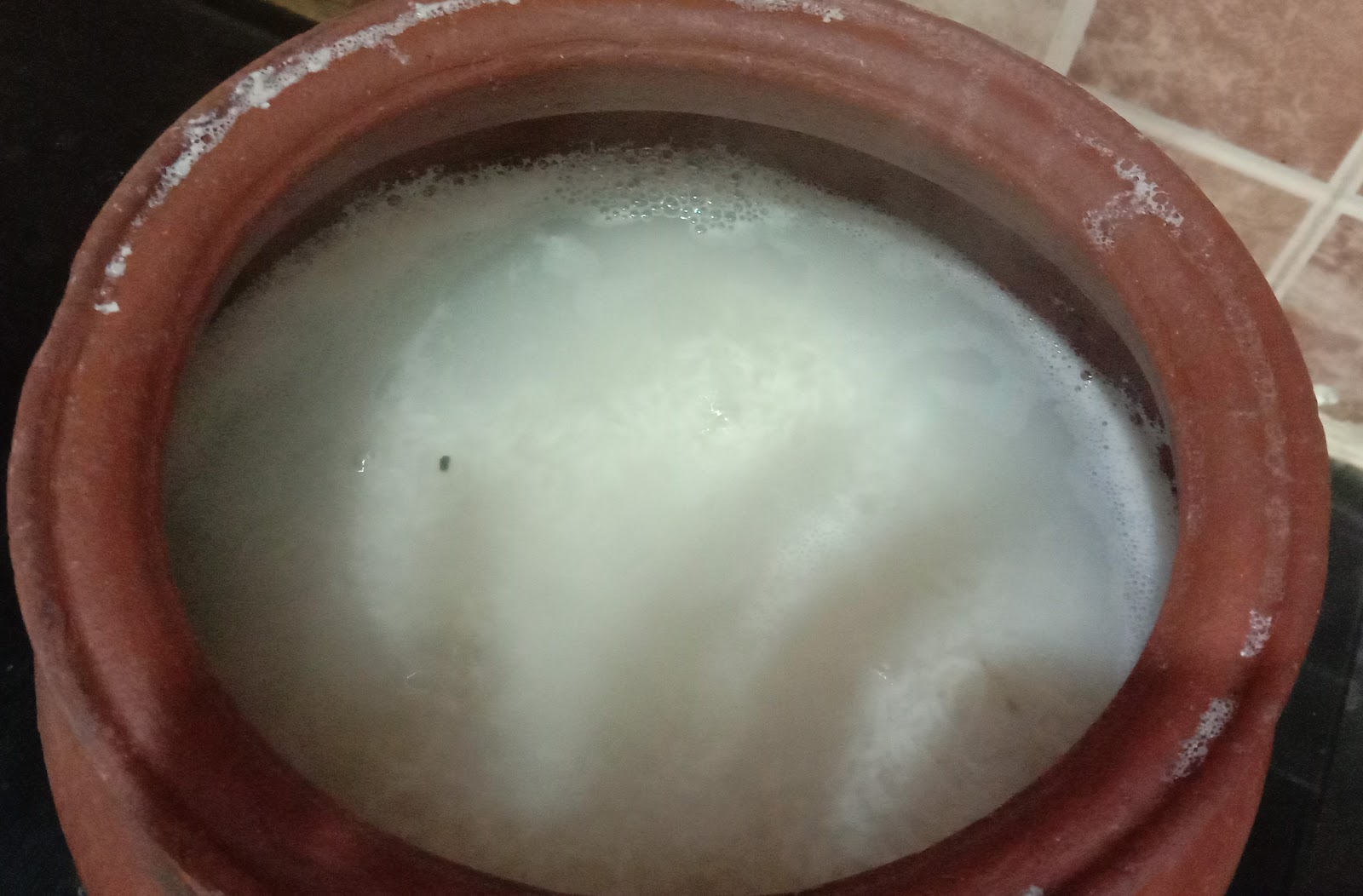
4
Check if rice is cooked. Then drain the excess water out.
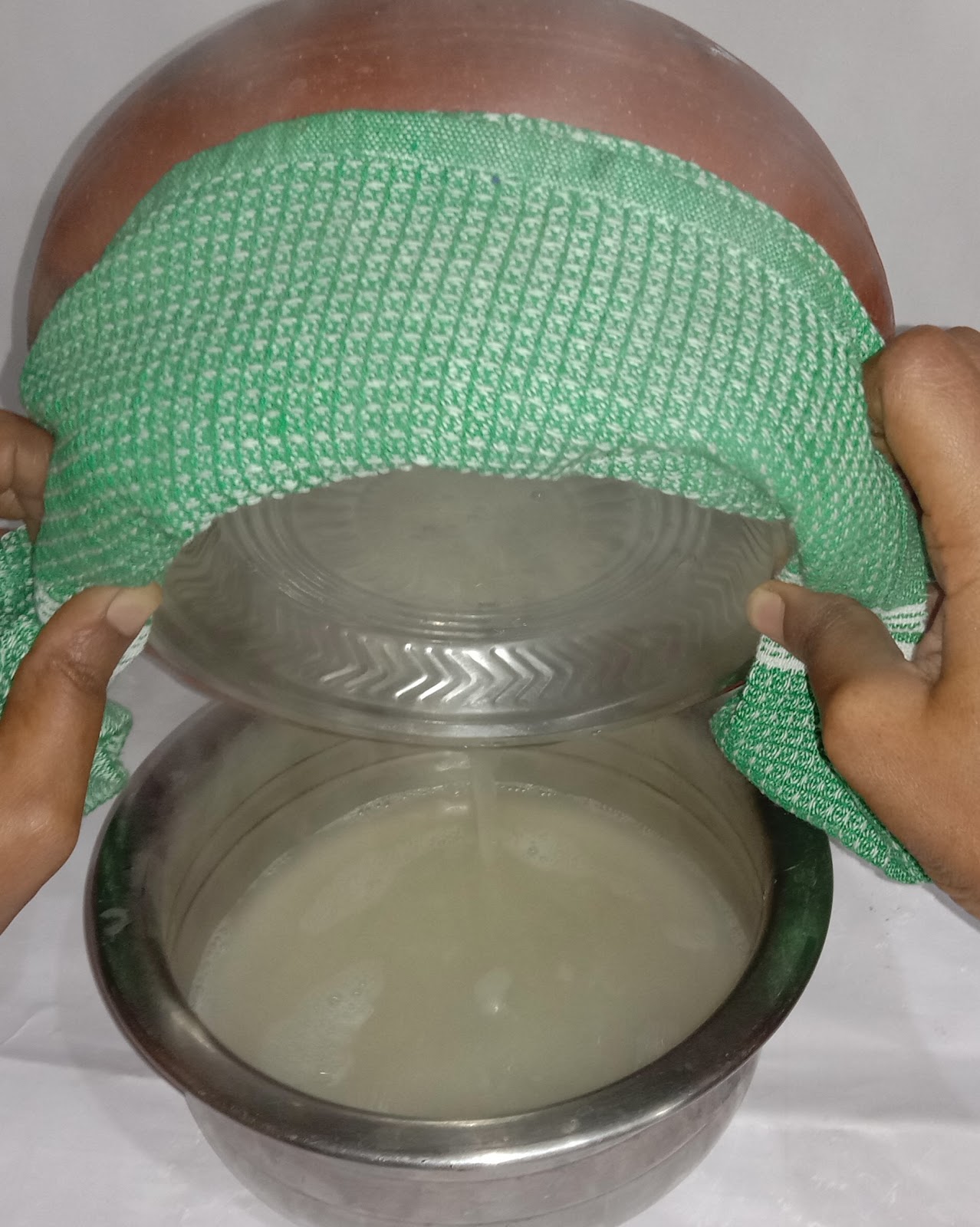
5
This is the cooked rice
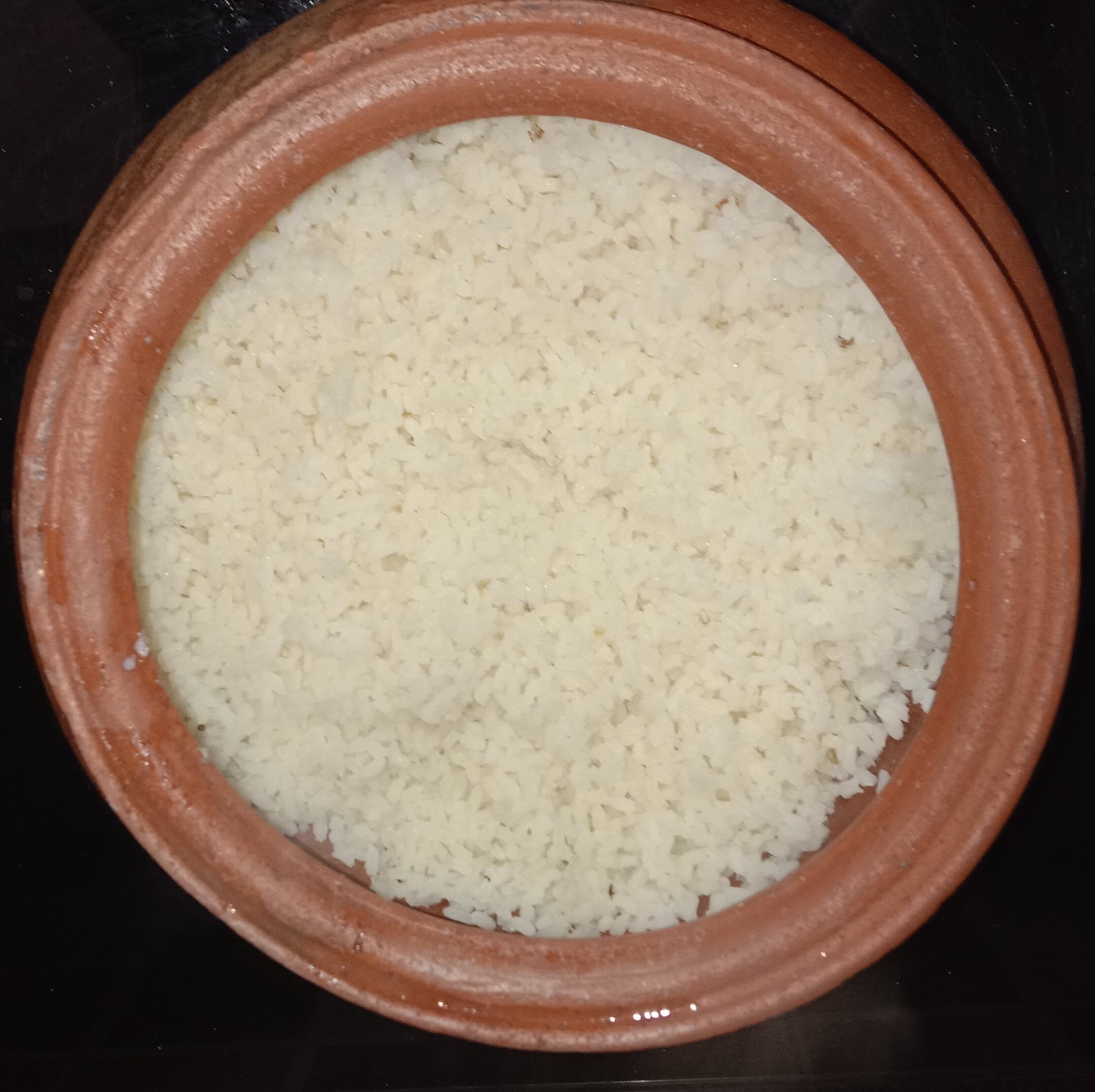
6
Transfer the cooked rice to a clean plate. Let it cool for a few minutes.
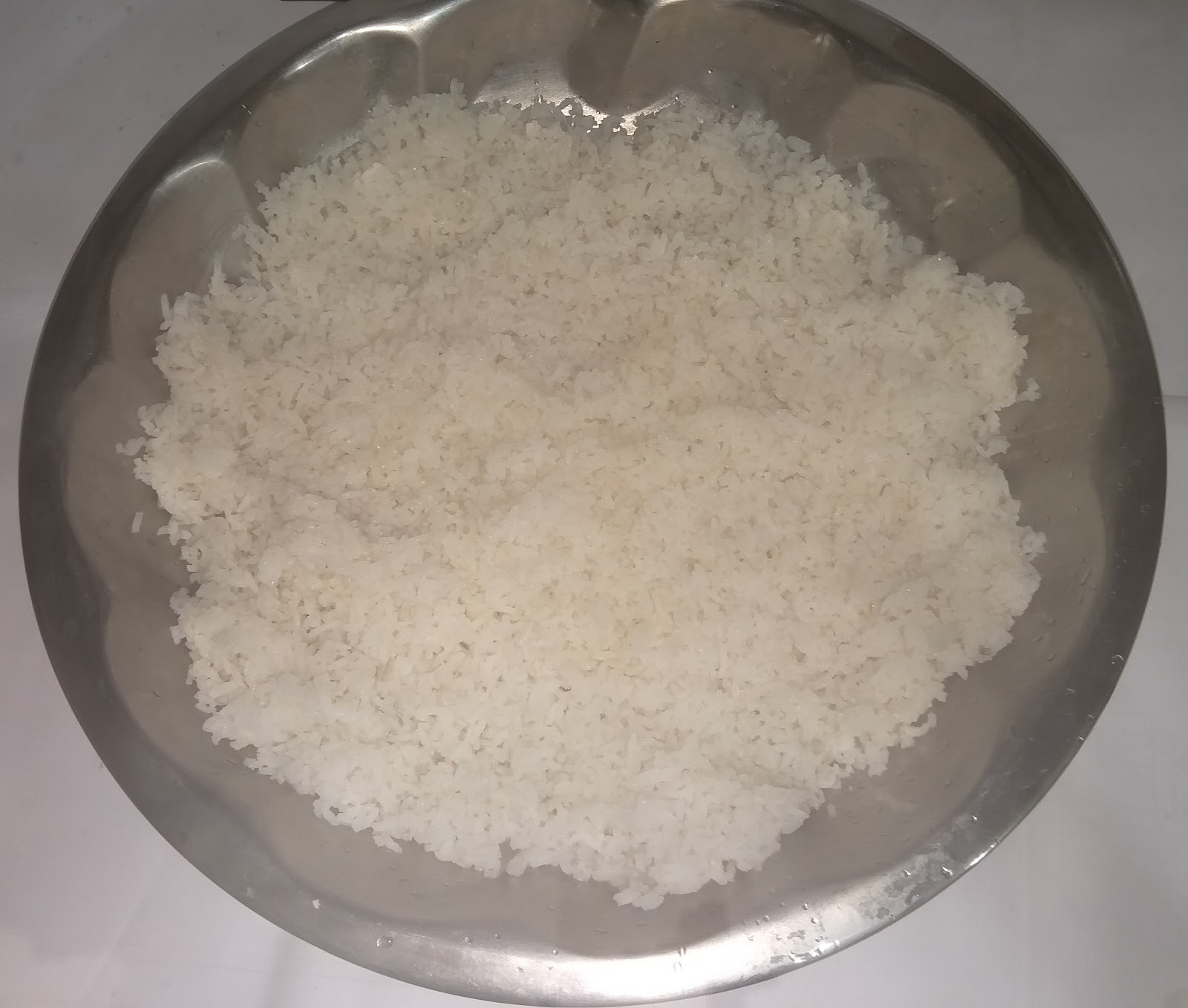
7
Once the rice is cooled, add the melted ghee on the rice. Mix the rice with the ghee gently until it is completely coated with it.
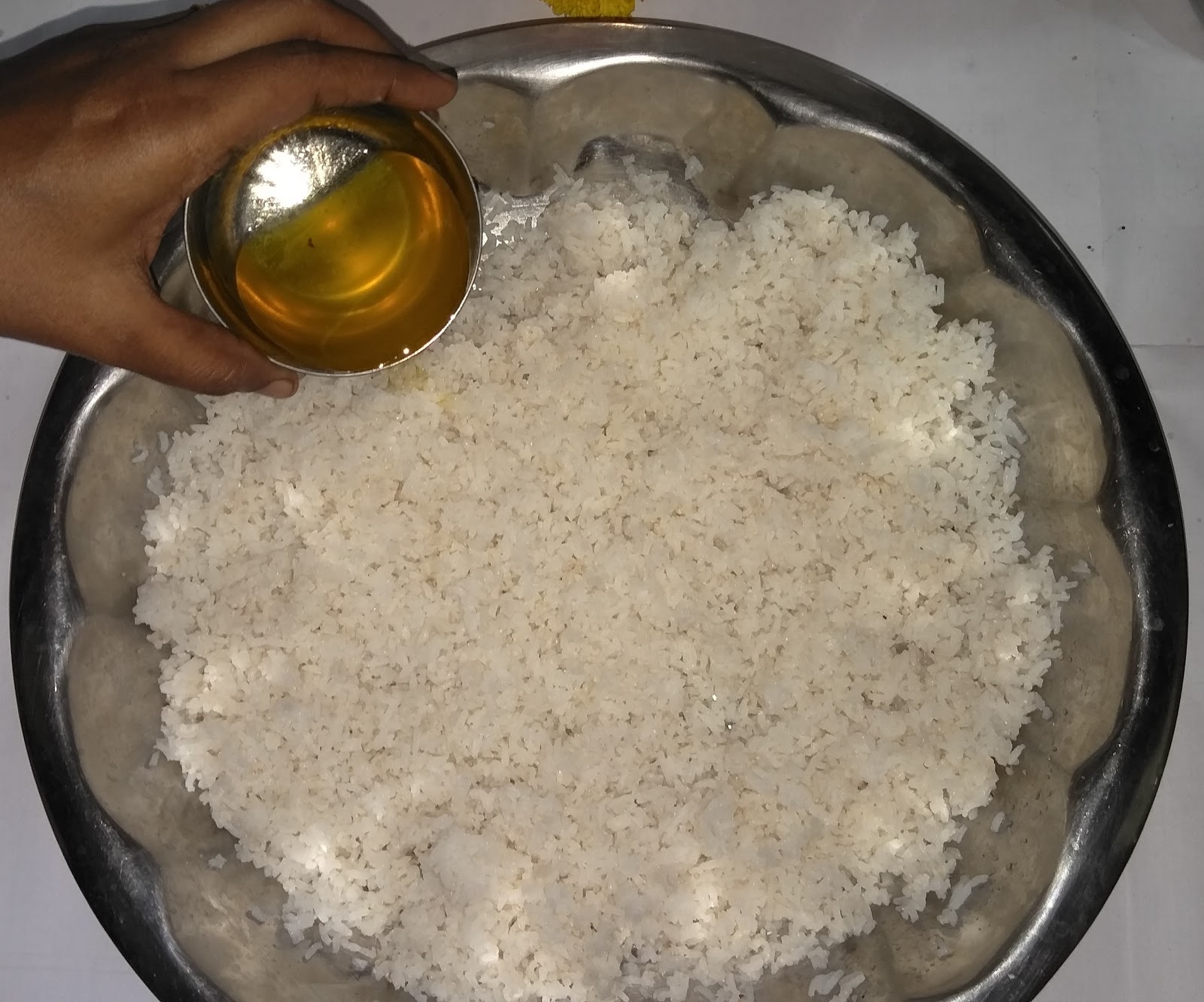
8
In an iron kadai add 70 ml of ghee.
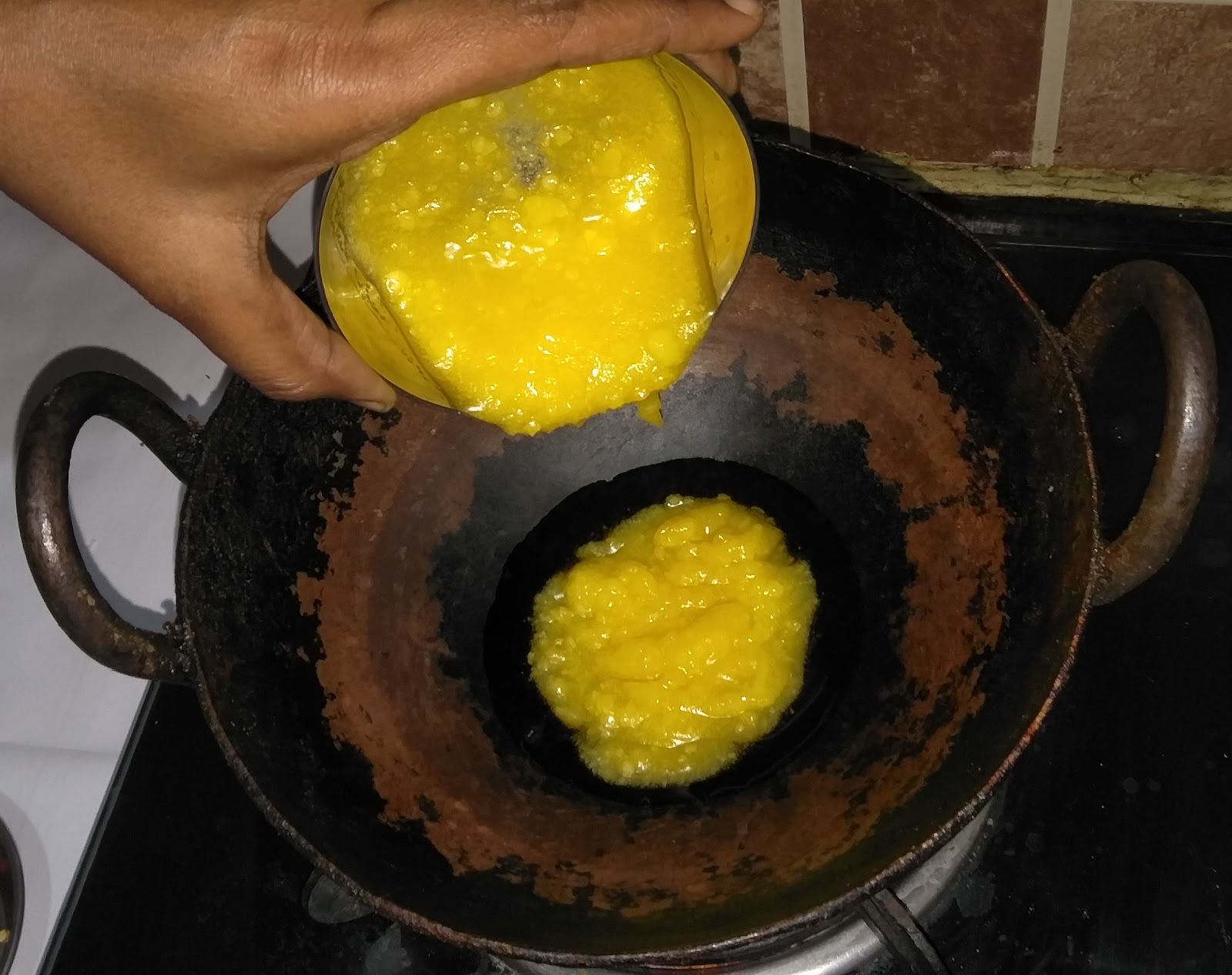
9
When the ghee is hot, add the red chillies. Stir fry the red chilli in the ghee.
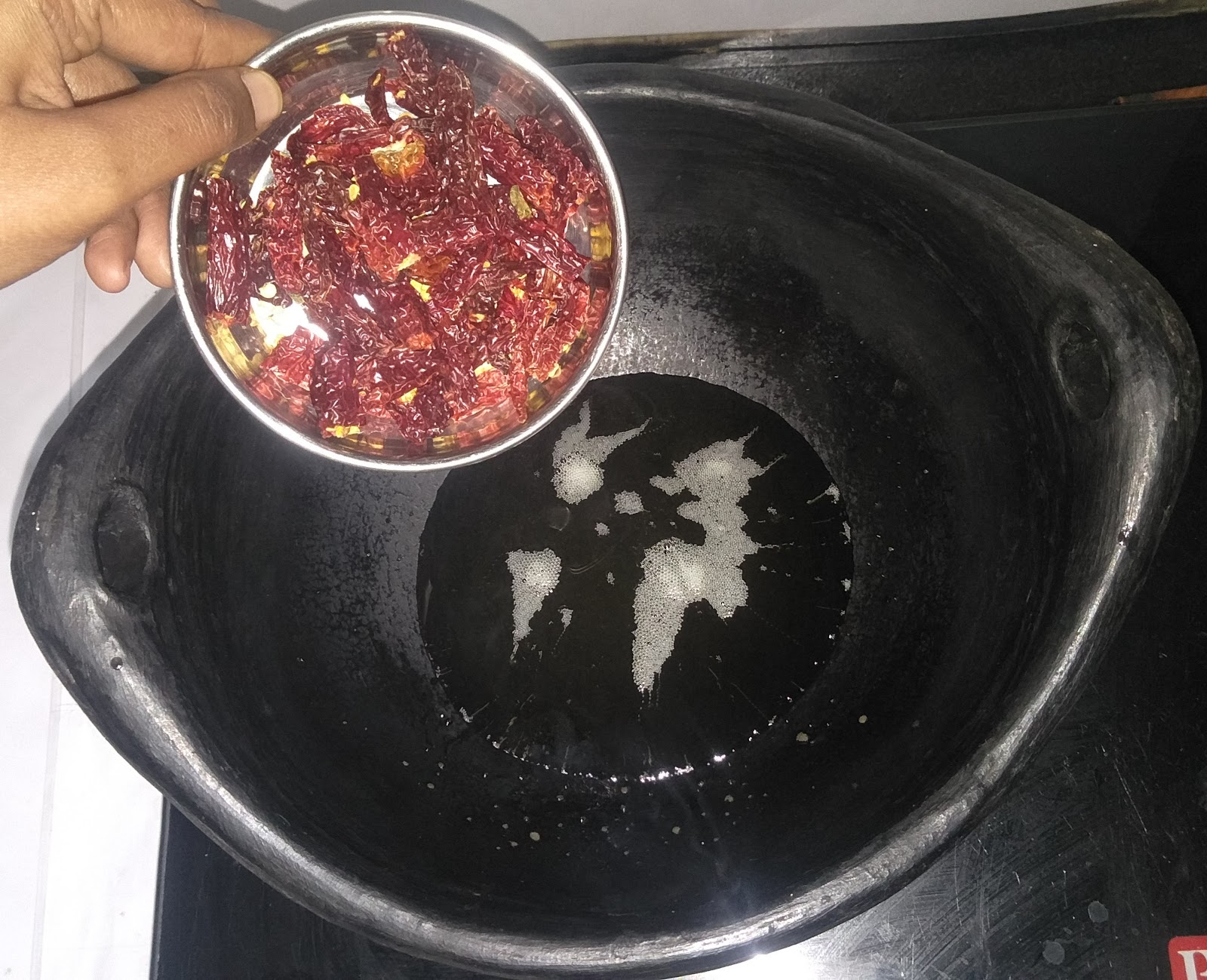
10
Then add the mustard seeds, urad dal and curry leaves. Stir it and allow it to fry for about a minute or until the mustard seeds fully splutter.
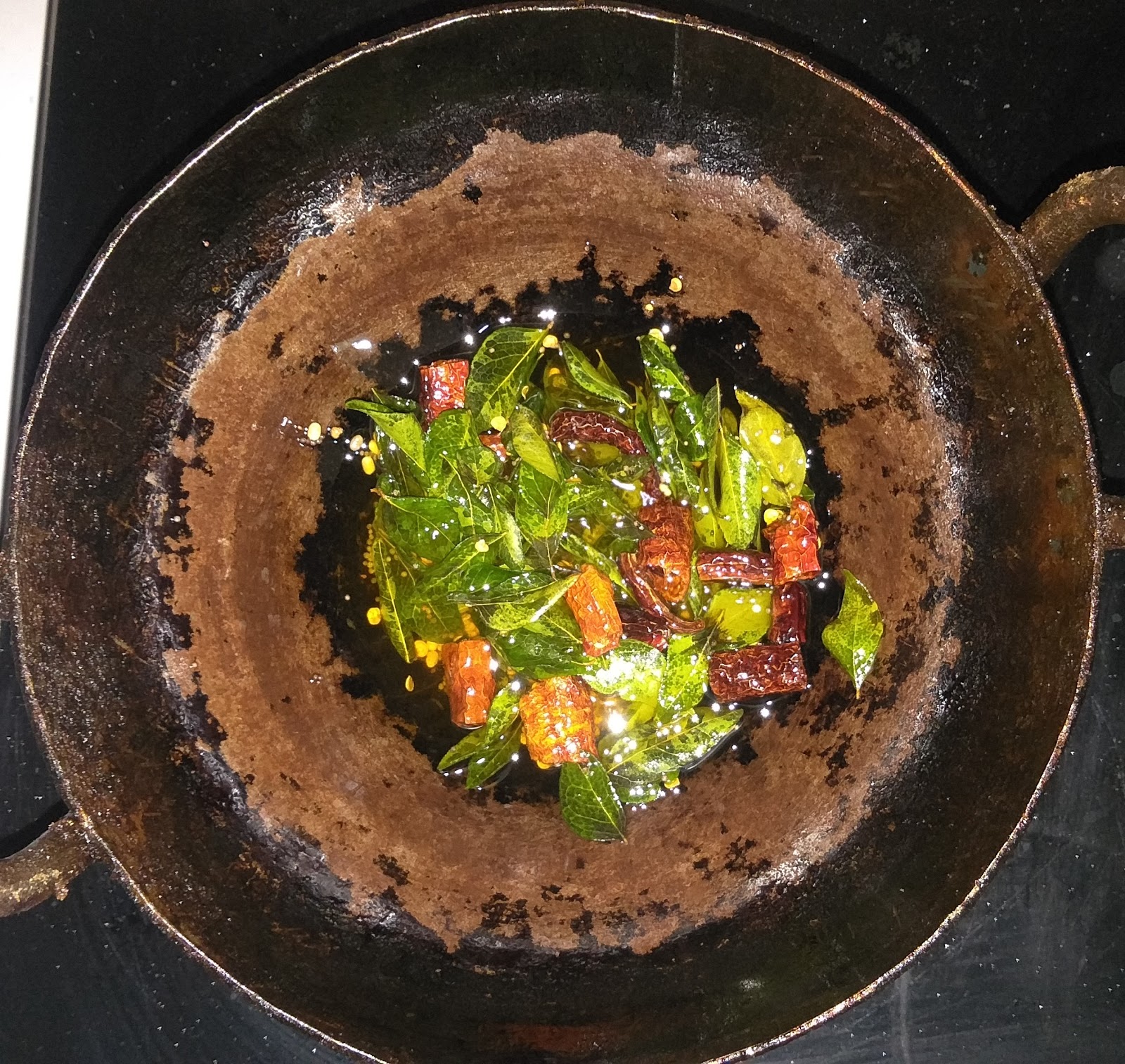
11
Switch off the flame and transfer contents into a bowl. Keep this mixture aside.
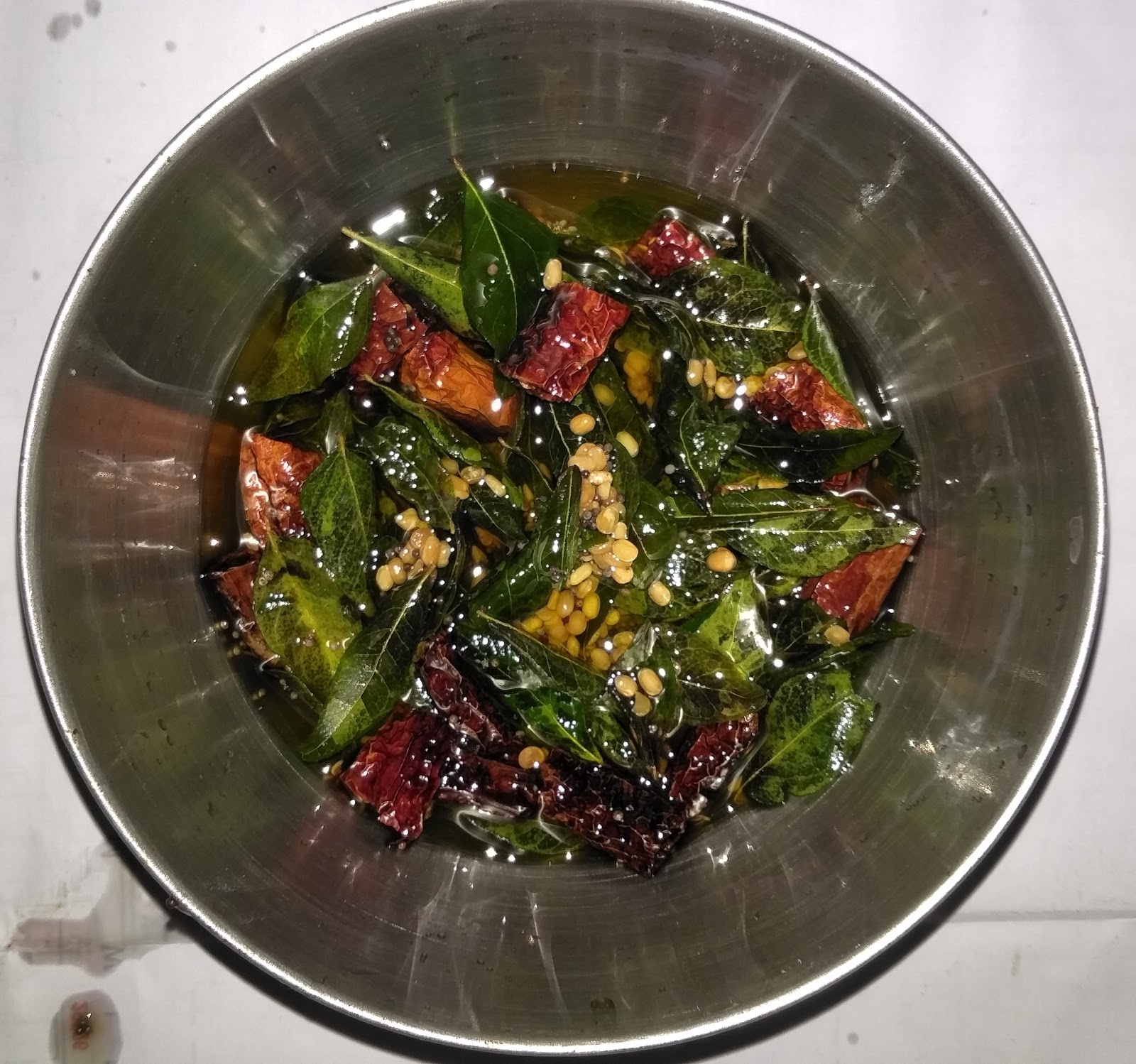
12
Take the same iron kadai, place on the stove, add the grated dry coconut and stir fry it until it becomes light brown in colour.
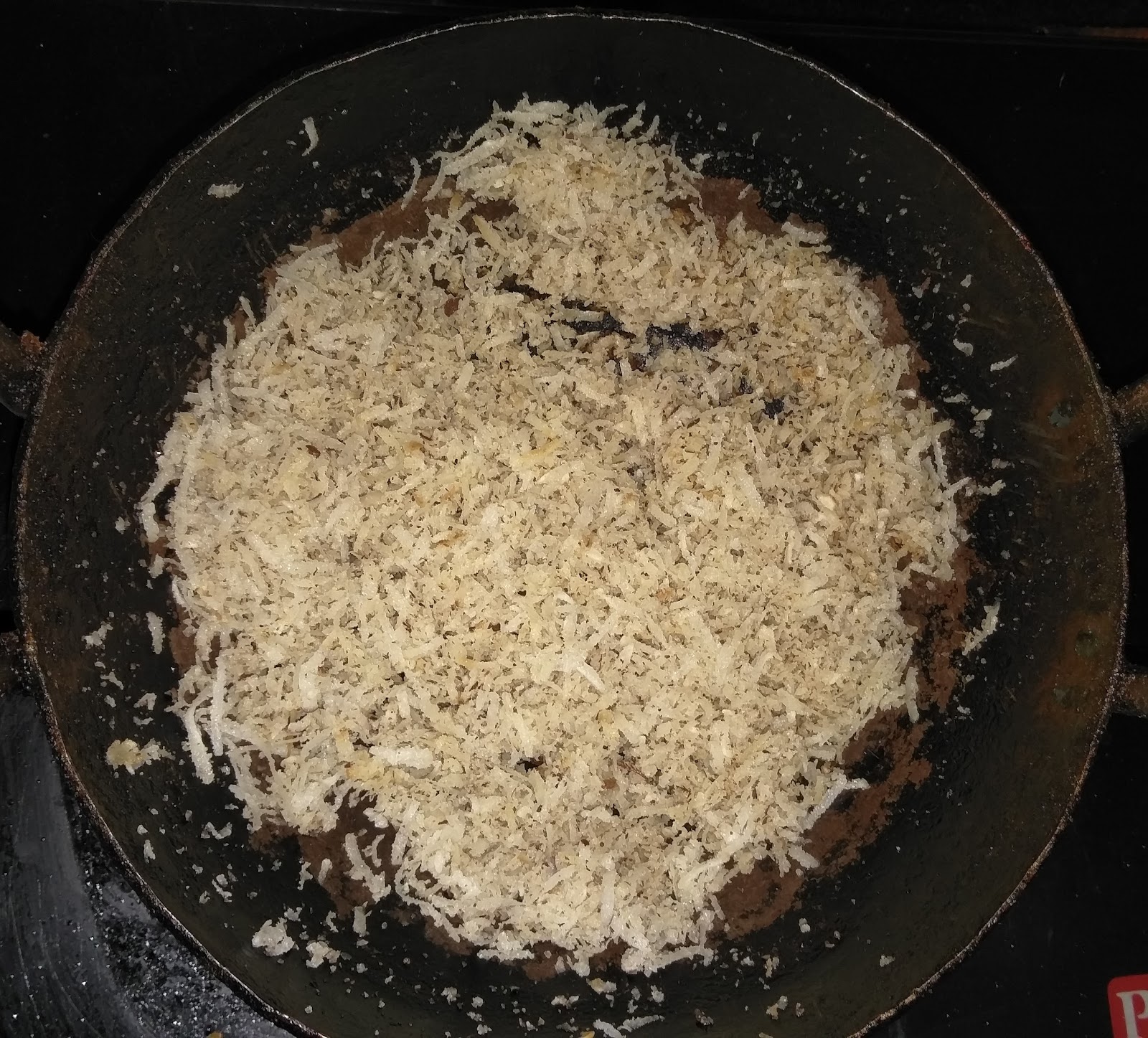
13
When the coconut turns slightly brown, add salt and mix well.
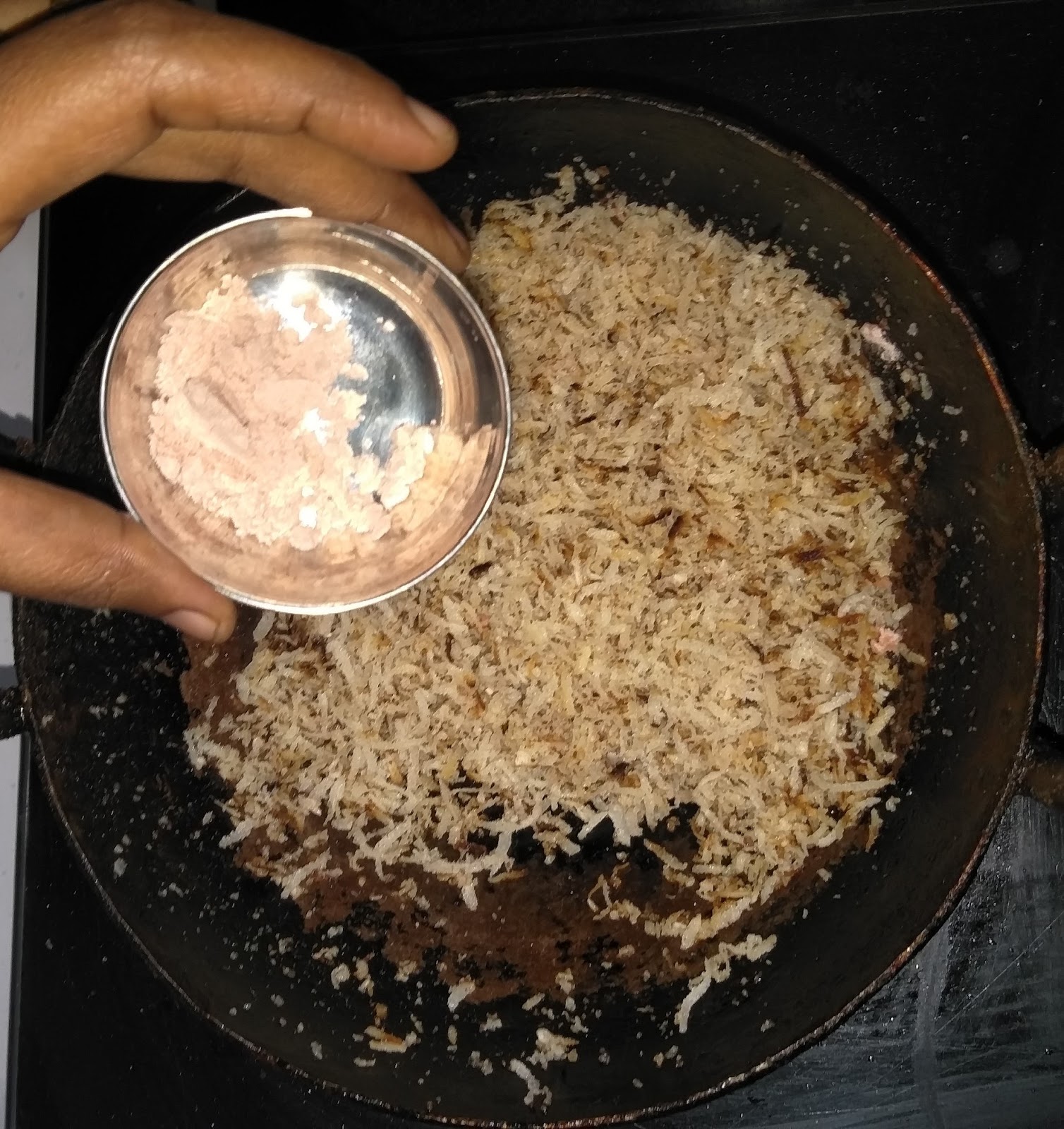
14
Next, add the rice and mix into the fried coconut gently.
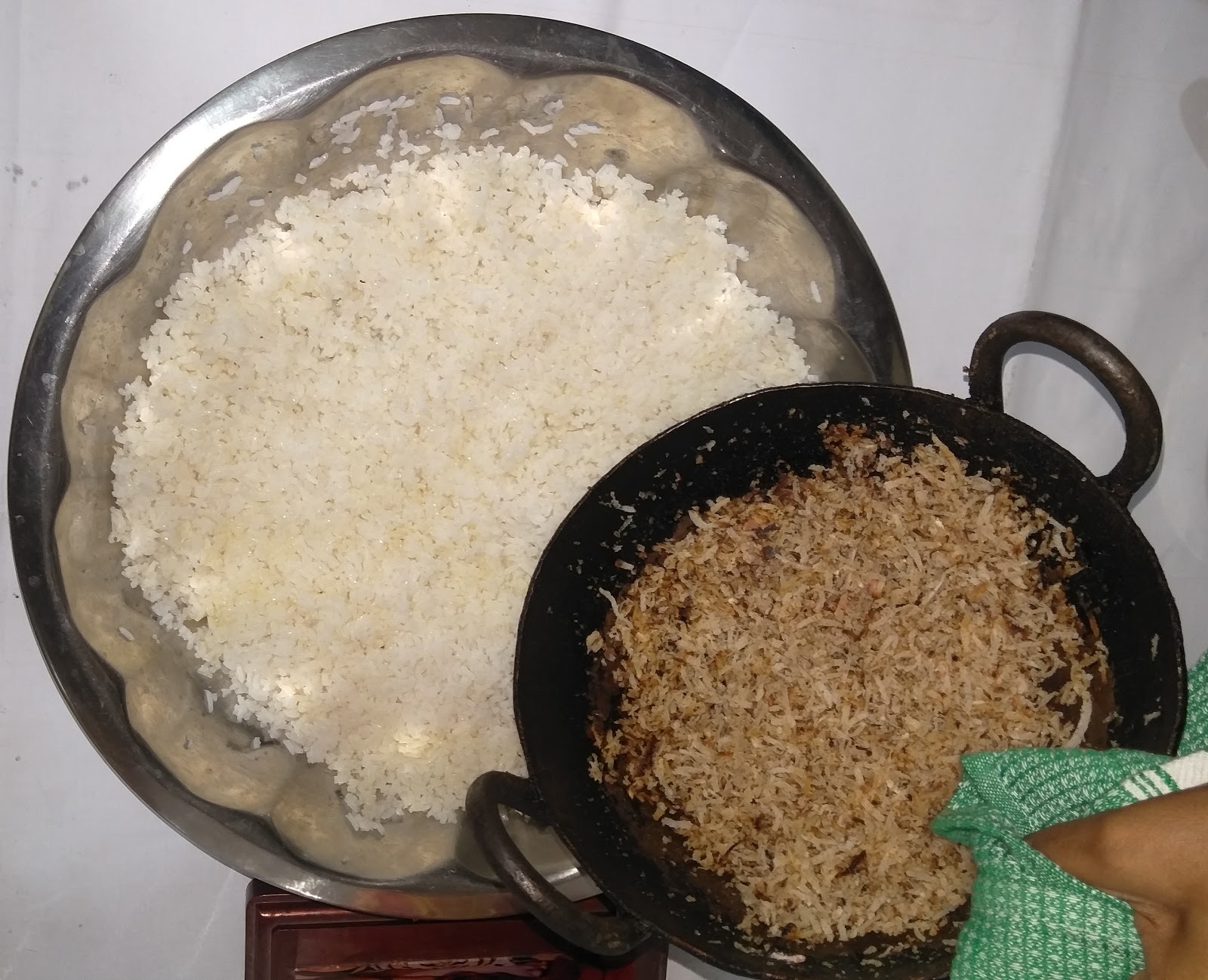
15
Now add the tempered mixture placed in a separate bowl, over this rice.
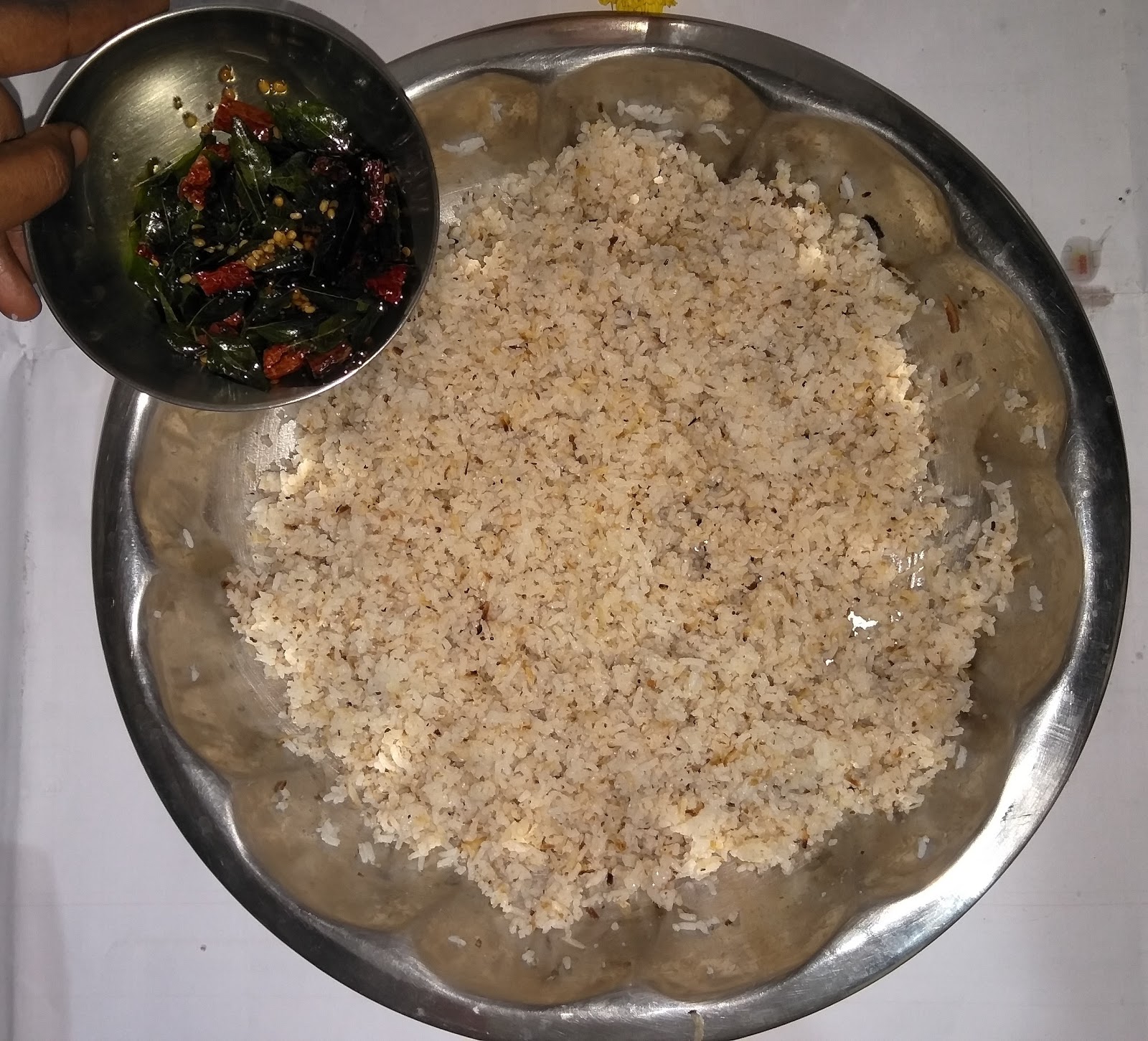
16
Mix the fried coconut and tempered mixture in the rice gently till it coats evenly.
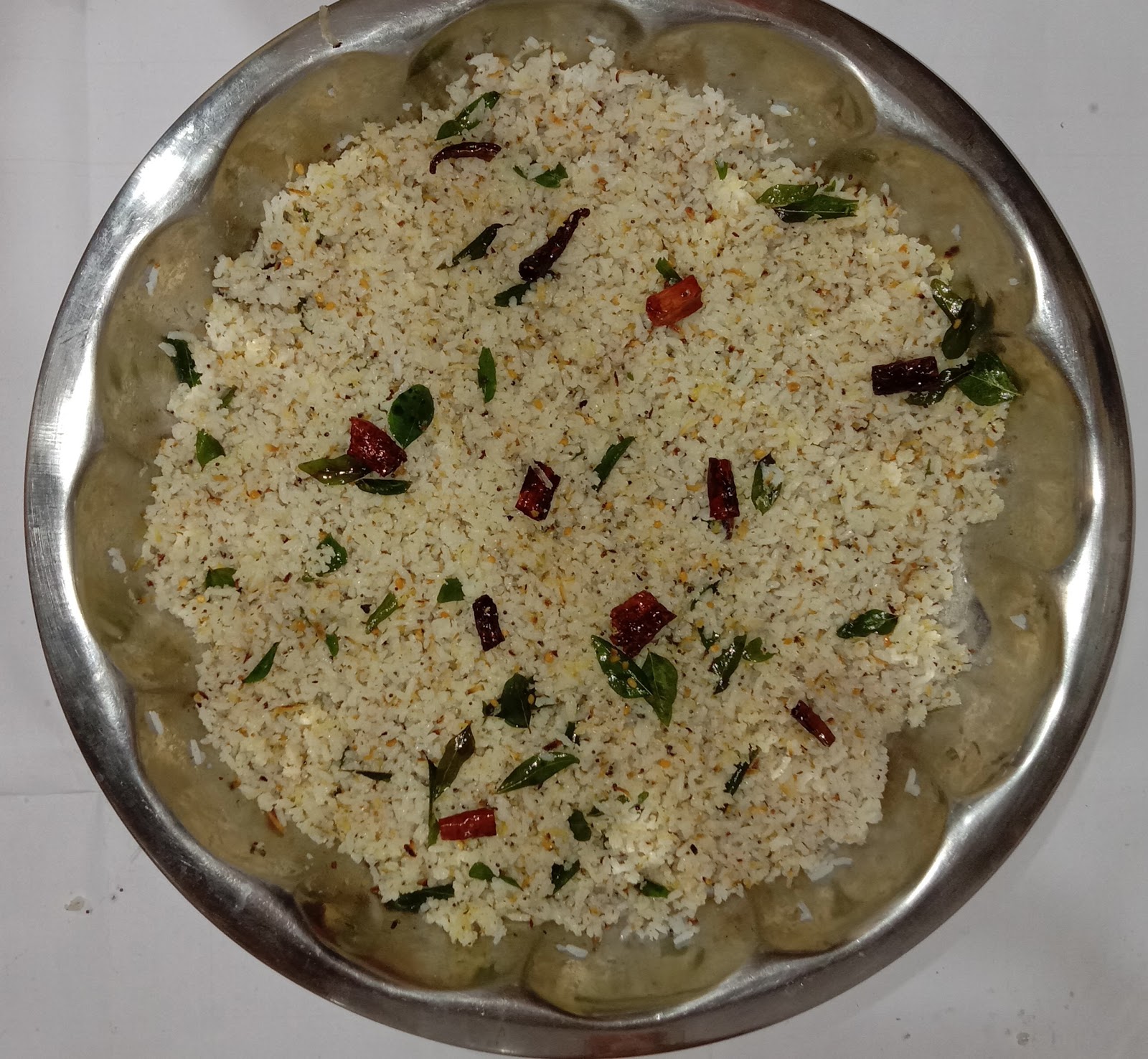
17
The Coconut Rice is now ready to be served as naivedyam to the divine.
